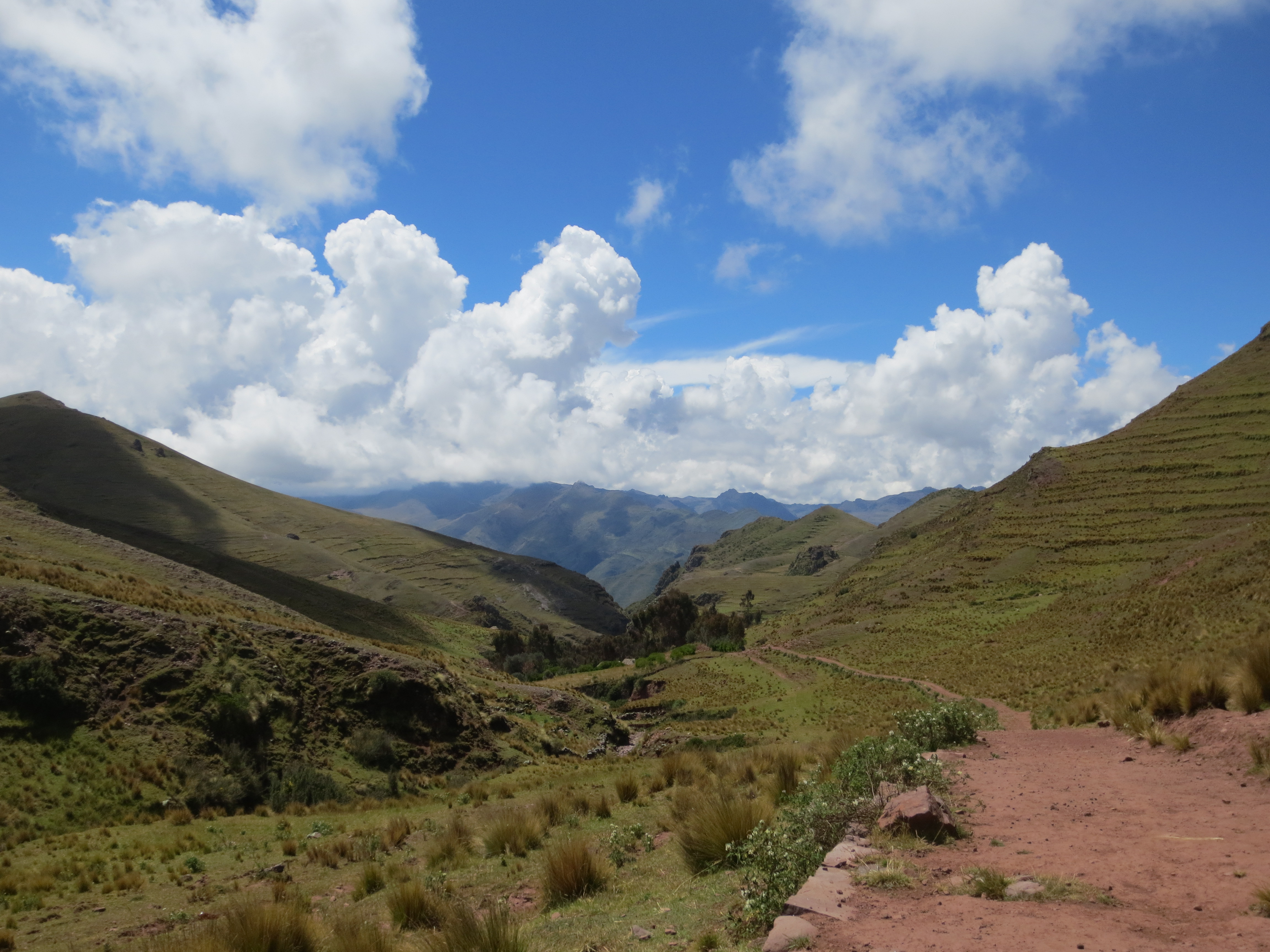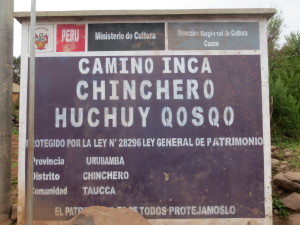
Well it took me a while, but I finally got a taste of hiking the Incan Trail! It all came about thanks to one of the English clients where I work… he is a tour guide who offered to take his teacher and the other students in his class on a guided hike and eventually the invitation was extended to me as well. I’m so grateful that it was, because not only was the hike beautiful but the company was pretty stellar, too.
Getting There
We all met up in the morning and made our way to a local bus station where our tour guide negotiated for us to take a taxi all the way to the starting point of our hike. We drove for at least an hour, passing through some very scenic landscapes, before stopping in the town of Chinchero for a quick coffee and pit stop. From there, it was about another 10-15 minute drive to the beginning of the trail. This part of the trip was ridiculously cheap, costing each of us merely $2.33 or so to arrive!
Let’s Begin
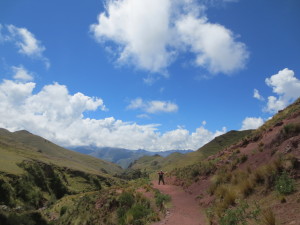
We knew that we were embarking on an 8-hours hike, so we started out at a nice, easy pace. We meandered steadily as the path lead us on a gentle incline through the Incan valley. On each side of us were pristine, green mountain sides which guided us on our way. It was an interesting contrast for me as in most of my hikes in Guatemala the entire landscape had been cultivated with one crop or another, but here the slopes were almost untouched. They also lacked the typical Incan terracing which can be found in Machu Picchu and countless other locations.
Climbing to the Ancient Stoplight
Eventually the hike got a little steeper, and as it did we came across a few interesting sights. The first was a reservoir where fish had been stocked for locals to consume along with the rest of their diet. Soon after that we found a lonely patch of purple potatoes growing, seeming out of nowhere, on the side of the mountain. It seemed a bit out of place to me as nothing else appeared to be growing nearby, but they looked healthy and delicious nonetheless.
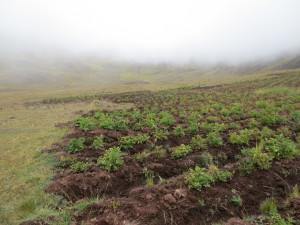
We were stopped a little further up by an attentive guide who had found an Incan stone on the path. He showed us the curvature/shape of the stone and explained to us how it would have been beaten into form with other stones by skilled stone-craftsmen with a keen eye.
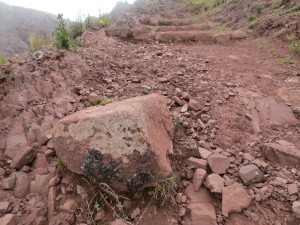
Most interesting of all, at least for me, came the ancient stop signs. According to our guide, these two massive stone structures were (still are?!?) used to signal the end of one territory and the beginning of another. Crossing from one side to the other without permission was a no-no.
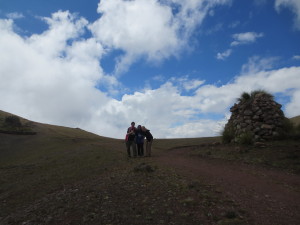
Animals and Houses
After passing through the stop sign, the valley opened up quite a bit and the sun came out which provided for even more stunning views of the surrounding mountains. We came across some more lakes, and eventually to a heard of wild horses. They were quite tame and our presence didn’t seem to bother them too much, but we didn’t push our luck. They were quite majestic-looking, especially with the mountainous backdrop which accompanied them.
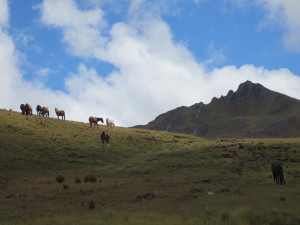
Not so majestic looking (and I say that with love) was the herd of wild llamas which we bumped into about ten minutes after saying goodbye to the horses. Nonetheless, they were still much more beautiful than the llamas and alpacas which are seem cruising around the city center of Cusco.
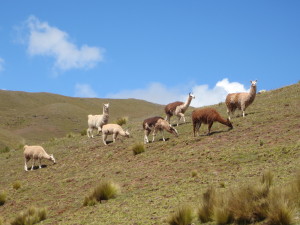
As we descended deeper and deeper into the valley we were met by a stone house and long stone wall. It’s hard to say when the house might have been built, but it sure looked like no one was living there at the moment. We were told by the guide that it is used during certain times of the year by some of the local people, but mostly in the colder, drier months of May-September.
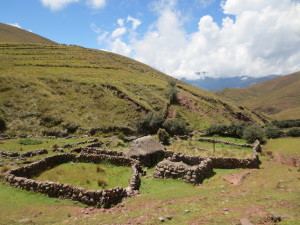
We also met a local woman who was transporting a baby llama (hard to see, but it is in her hands) to her house. She came by and talked to us for a bit, and was a really sweet lady. Her dogs really enjoyed the homemade cookies that one of the students had brought on the trip!
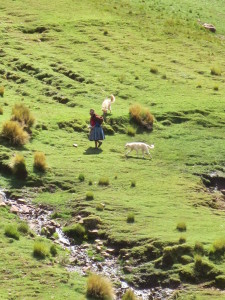
Getting to Huchuy Qosqo
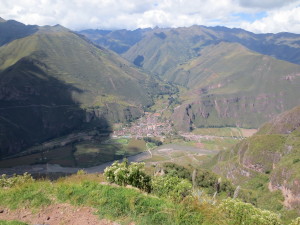
As we walked the path became increasingly more beautiful, so much so that pictures don’t really do it justice. We ended up passing by a small town whose name I cannot remember, then down a steep flight of uneven, rocky stairs where we followed a river towards even narrowing sections of the valley. Small wooden bridges were crossed as we zigzagged our way around beautifully build stone paths that hugged the river until it dropped off to become a very pretty waterfall. The path then led us around the side of the mountain where we were eventually greeted by stunning views of Lamay, a small town at the bottom of the valley and our final destination.
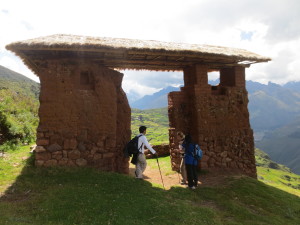
Before confronting our final descent we arrived at Huchuy Qosqo, an archeological site which for the last fifteen years or so has been studied to learn more about the history of the site. In fact, our guide pointed out that some of the stone work in the area is different from other Incan site, resulting in the hypothesis that the original site pre-dates the Incas and that the Incas came later. The site may also have been used as a mountain refuge in case of attack from rival groups.
Hike Grade: A
This really was a stunningly beautiful hike, one which I would happily do again. It wasn’t too difficult, but it was long… about 8 hours in total. Also, there was little protection from the sun, and even with regular sun block applications and a hat I still got burned. Other than that, this trip gets top marks from me!
